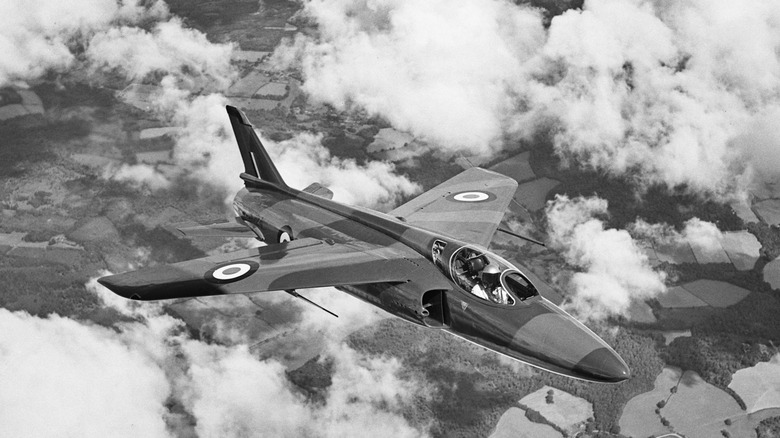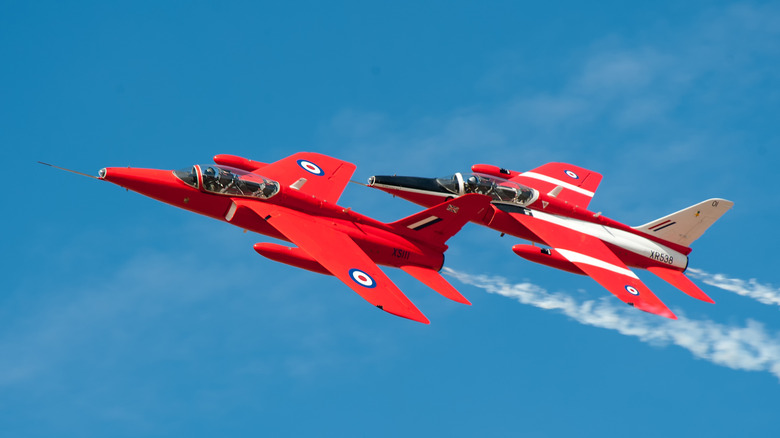What's The Smallest Fighter Jet To Have Ever Entered Service? (And How Effective Was It?)
There are a number of very large fighter jets in service. For instance, the Russian Sukhoi Su-34 "Fullback" is over 76 feet long. It's massive. Even the more nimble F-22 is over 60 feet long. But what about the other end of the spectrum, what's the smallest jet to have entered service in the world?
When thinking about small jets, most modern contenders like the F-16 are still pretty sizable. However, late World War II and early Cold War jets might fit the bill. The first ever fighter jet, the Nazi Me 262, was, compared to today's jets, very small at 34 feet, 9 inches long. The later Soviet MiG-15 was puny too at 33 feet, 3 inches long. However, even those jets are too big to win the title of the smallest.
That superlative would belong to the appropriately named Folland Gnat, developed to be flown by the British Royal Air Force in 1955. It is 29 feet, 9 inches long, less than half an F-22 Raptor. Its top speed isn't very high comparatively, only topping out at 695 miles per hour, a little bit under the speed of sound.
An impressive service record
Despite its size, the Gnat was a remarkably successful aircraft, seeing extensive trainer service with the British RAF and even combat service with India's Air Force. In its fighter configuration, it was armed primarily with two 30-millimeter cannons, yet it also had the capacity to carry bombs and rockets if it needed to be used in a ground attack role. Most of its combat record was attained fighting Pakistan's F-86 Sabres in the 1960s, according to the March Field Air Museum. Reportedly it was enough of an effective fighter that it managed to shoot down a number of Sabres while in service.
With British Royal Air Force pilots, it modified to be a two-seater and used as both a trainer and demonstrator aircraft. In the 1960s, it flew with the Red Arrows, the RAF's famed aerobatic maneuver team, before being replaced by the BAE Systems Hawk. Compared to more famous early jet fighters like the aforementioned Sabres and MiGs, the Gnat is fairly obscure and figuratively (and literally) overshadowed by other aircraft from history. Despite all this, the Gnat proved it was more than just a goofy little footnote in aircraft history.

